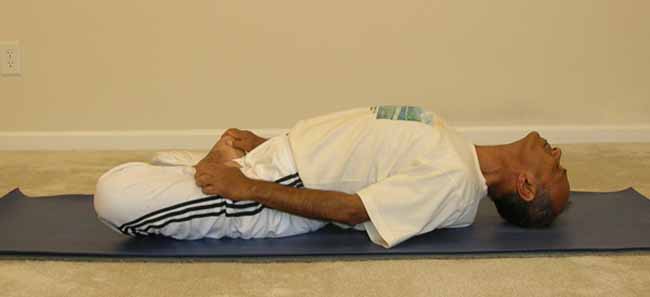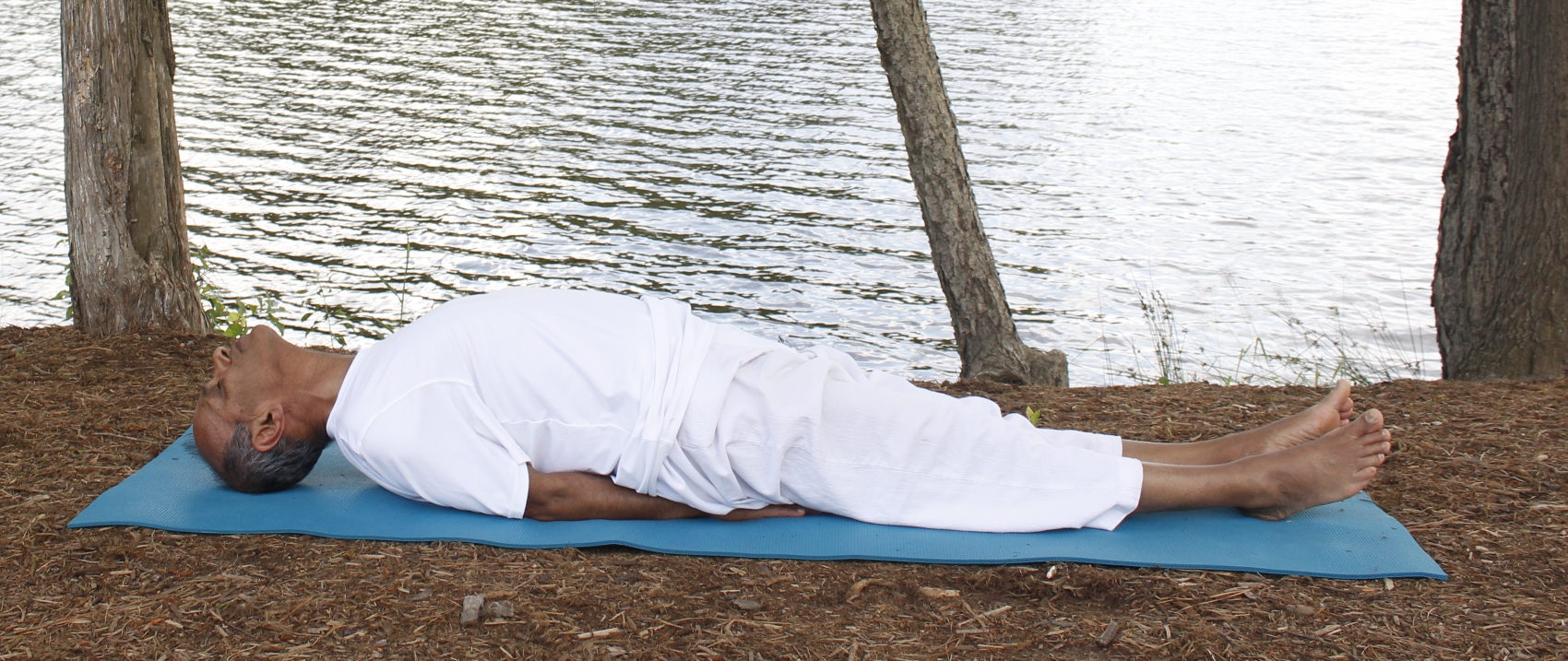Matsyasana (मत्स्यासन)) or the Fish Pose is an excellent back bending pose. It is usually practiced as a counter pose for a forward-bending pose or the Shoulder Stand (Sarvanagasana). However, the pose has excellent benefits and can be practiced alone as well. In Sanskrit, the word "matsya" means fish. It is believed that one can float like a fish in water in this pose.
Step-by-Step
- Start in the Shavasana relaxation pose on the back.
- Bring the feet together and come up on the elbows
- Begin to raise the chest higher while at the same time lowering the head toward the floor. You may need to adjust the elbows in order to allow the crown of the head to make soft contact with the floor. In order to provide support for the spine, you may put the palms under the buttocks, facing up or down depending upon what feels more comfortable
- Roll the shoulder blades back in order to lift the chest even higher. In the final position the chest is lifted high, the head is tilted back and you are looking at the wall behind you.
- You can maintain the final position for about 8-10 breaths, or as long as comfortable.
- To come out of the pose, come back up on the elbows and lower the chin toward your chest. Then very slowly, one vertebra at a time, lower the back to the floor. Finally rest in Shavasana.
Variations
- While in the final Fish pose, you may lift the feet about 3-4 inches off the floor. This will provide additional stretch to the inner thighs, lower back and the abdominal muscles.
 Padma-matsyasana – (Lotus Fish Pose): Start out sitting in the Lotus position (Padmasana). If this position is not comfortable, you should avoid this variation.
Padma-matsyasana – (Lotus Fish Pose): Start out sitting in the Lotus position (Padmasana). If this position is not comfortable, you should avoid this variation.
- Leaning slightly backwards, rolling the body side to side, put the forearms on the floor.
- Bend the head backwards so you can see the floor behind you. In this position, your chest is lifted high and the crown of the head is making contact with the floor.
- Slide the hands away from the head. You can either keep the arms alongside the body or, if comfortable, you may grasp the big toes with the hands.
- In the final pose, try to maintain the maximum arch of the spine without causing any strain to the neck or the legs.
- Breathe slowly and deeply and maintain the final position for about 8-10 breaths or as long as comfortable
- To come out of the pose, release the Lotus Pose and stretch the legs straight, come back up on the elbows and lower the chin toward your chest. Then very slowly, one vertebra at a time, lower the back to the floor. Finally rest in Shavasana.
Contraindications
Those suffering from peptic ulcers, hernia or a serious spinal problem should not practice the Fish pose without expert guidance. Ladies in advanced stages of pregnancy should also avoid this pose.
Benefits
- Matsyasana provides excellent massage to the abdominal organs, thus helping to alleviate digestive disorders
- The ribcage and the lungs are stretched which improves the breathing process. It helps those who suffer from asthma, bronchitis or other lung-related ailments
- The spine is stretched and the nerves in the neck, and the thyroid and parathyroid glands are influenced. Thyroid glands help improve metabolism and the parathyroid glands improve the calcium flow in the body, thus helping with the bones.
- Additional blood supply is provided in the pelvic region and the sexual glands which helps to revitalize these organs

[…] Matsyasana (Fish Pose) | Yoga With SubhashJul 4, 2009 … Matsyasana (मत्स्यासन) or the Fish Pose is an excellent back bending pose. It is usually practiced as a counter pose for a … […]